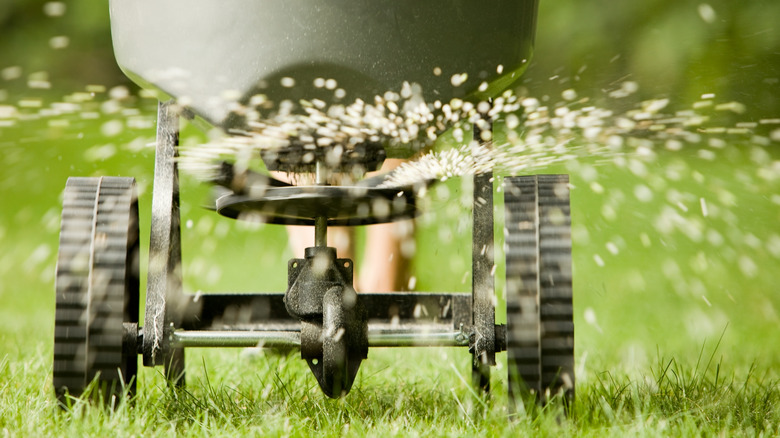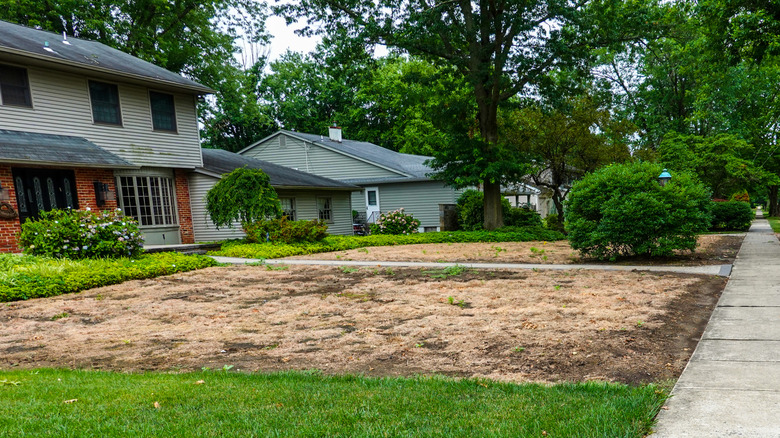Why You Shouldn't Apply Weed And Feed Too Late In The Fall
The weed and feed method works wonders when you want the grass to be greener on your side of the fence. Healthy lawns are thick and lush, with a deep color and blades of grass that aren't brittle on your bare feet. They show no signs of yellowing, bare patches, or moss. Those enviable yards that roll across the neighborhood like rich emerald carpets don't happen by accident. Instead, a beautiful lawn is the result of year-round maintenance and care.
Weed and feed describes a combination of chemicals meant to strengthen your lawn: herbicides that quash dandelions and other weeds and fertilizers that provide food and nutrients. Available in granule and liquid forms, weed and feed products can be a game changer. But using the wrong chemicals, or using the right chemicals at the wrong time, is one of the easiest ways to kill grass in your lawn.
Most weed and feed products should be applied in the spring as soon as weeds start to sprout. If you're still struggling with weeds as summer winds to a close, it's okay to do a second application of weed and feed for cool-season grasses, like fescue or Kentucky bluegrass, by the last week of September. The extra nutrients will improve grass density while helping prepare it for winter. But because many grasses can experience significant damage when new growth is suddenly followed by frost, including warm-season ones like Zoysia and Bermuda, you shouldn't apply weed and feed too late in the fall.
Things to know before using weed and feed this fall
Timing your weed and feed applications is important, and it's not just the season you must keep in mind. Spring or fall, avoid applying lawn chemicals during the heat of the day to prevent lawn burn. The non-selective herbicides in weed and feed destroy everything in their path because they contain toxic chemicals that prevent photosynthesis and cause foliage deformities. Never apply these strong herbicides more than twice a year, and wait several months between applications to avoid ending up with a crispy brown yard.
Feeding your grass in early fall helps it maintain a green appearance while preparing for winter dormancy. Weed and feed products let you take care of two tasks at once because they contain fertilizers made of potassium, phosphorus, and nitrogen. These are important elements for a healthy lawn, which needs to be continuously fed. The pros at Scotts recommend feeding your grass four times a year, along with regular mowing, watering, and grub prevention. Between weed and feed applications, fertilize your grass every two to three months during the growing season.
When applying a weed and feed product, follow the manufacturer's recommendations and safety guidelines. For best results, apply the chemicals evenly across your lawn, but be very careful to avoid contact with flower beds and shrubs, especially if you are using a broadcast spreader. Apply weed and seed by the end of September to ensure your yard thrives during the colder months.

